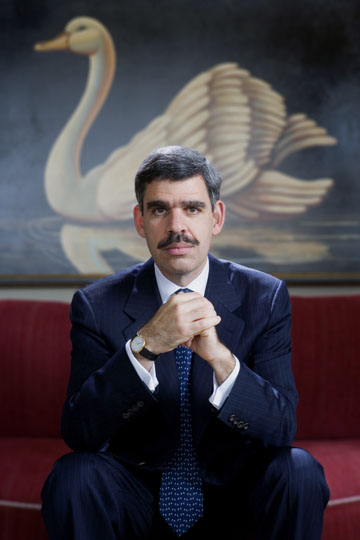Michael F. Price is going to kick off our inagural post. Well, sort of.
I'd like to share the summary (mainly the categorized juicy portfolio management bits) of an interview with MFP in Peter J. Tanous' book Investment Gurus.
Sourcing, Creativity: Price discusses how competitive the traditional bankruptcy and restructuring game has become (this was 1997 folks, think of how much more competitive it must be today). As a creative way to deploy capital into distressed situations, he would do “standby purchaser” deals, in which companies would do a rights offering to raise additional capital and reserve a certain % of the deal for Mutual Series, as well as whatever % existing shareholders didn’t want. These “standby purchaser” deals required him to keep an eye out for companies near liquidity crunches, and meet with them beforehand to offer his assistance, thereby requiring more work and proprietary sourcing, but involved far less competition than traditional bankruptcy/restructuring situations. Reminds of the recent Buffett deals (convertible preferred + warrants) with GE, Goldman Sachs, Bank of America.
Risk: “Risk is not the same as volatility. It’s very hard to measure risk. It’s very simple to measure return. You can’t model it.” He also discusses how earnings and asset value both help mitigate risk.
Cash / Special Situations / Volatility: Cash is ~5-25% of his portfolio “always.” Special situations (bankruptcy, arbitrage, tender offer, merger, buyback, liquidation, etc.) positions don’t move with general market but more with progress of individual situation. Cash + Special Situation is ~40% portfolio. The remaining ~60% consists of POCS (Plain Old Common Stock, value ideas trading below “intrinsic value”) which should theoretically go down less than the market. Therefore his portfolio beta is ~0.6.
Catalyst, Activism: “We perform well because some of our stocks have these catalysts. You asked why do we spend our time going around to shake some cages? It’s because a lot of times you can buy good values. But until there’s a catalyst, the value is not going to get realized.”
Turnover: Portfolio turnover is in mid-70s, skewed upwards by Special Situations basket.
Capital Preservation: “My mission isn’t to make money in bull markets. My mission is to preserve capital.”
Foreign Exchange: “Foreign positions are hedged perfectly every day so currency movements don’t affect our fund price.”
So there you have it: a little sample to whet your appetite! I'll be posting more summaries from other great investors in the weeks and months ahead, be sure to check back for updates.




